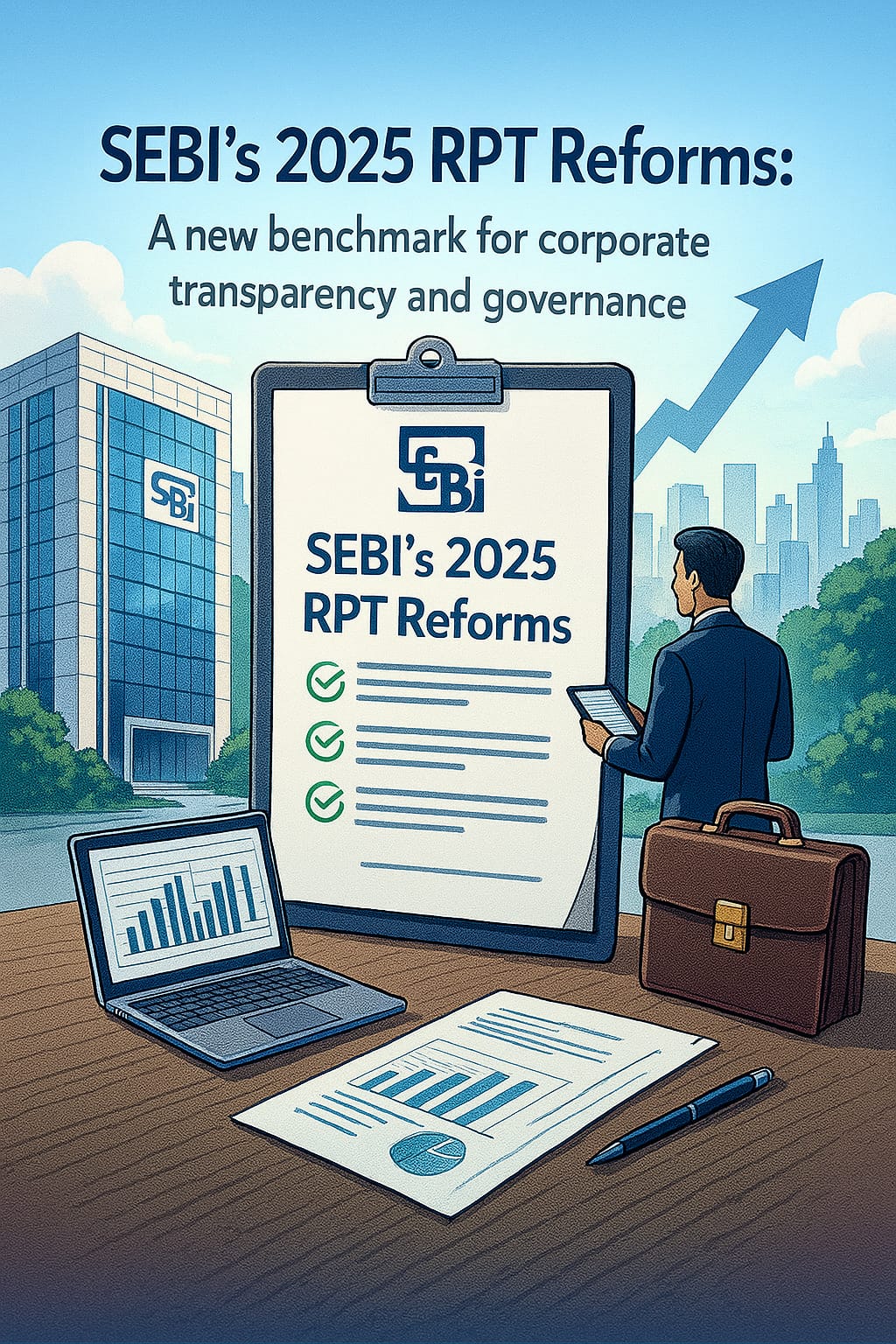SEBI’s 2025 RPT Reforms: A New Benchmark for Corporate Transparency and Governance
“Change is constant — but compliance is leadership.”
As India’s corporate ecosystem evolves, the Securities and Exchange Board of India (SEBI) continues to reinforce the pillars of transparency, accountability, and fairness.
In this spirit, SEBI has issued Circular No. SEBI/HO/CFD/CFD-PoD-2/P/CIR/2025/93, dated June 26 2025, introducing Industry Standards on “Minimum Information to be Provided to the Audit Committee and Shareholders for Approval of Related Party Transactions (RPTs).”
These reforms — effective from September 1 2025 — aim to standardize RPT disclosures, strengthen Audit Committee and shareholder oversight, and ensure uniform governance practices across listed entities.
Why SEBI’s RPT Overhaul Matters
Related Party Transactions (RPTs) are integral to many business operations. However, historically, companies followed varying disclosure formats and interpretations of what should be presented to boards and shareholders.
To address this inconsistency, SEBI — in consultation with the Industry Standards Forum (ISF) comprising ASSOCHAM, FICCI, and CII, and operating under the aegis of stock exchanges — developed a standardized disclosure framework.
The objective of these industry standards is to:
-
Bring uniformity in RPT approvals.
-
Ensure complete and comparable information disclosure.
-
Improve governance, transparency, and investor protection.
Implementation Timeline
| Milestone | Effective Date | Details |
|---|---|---|
| Initial Circular issued | February 14 2025 | Industry Standards first introduced (effective April 1 2025). |
| Extension Circular | March 21 2025 | Applicability extended to July 1 2025 after industry feedback. |
| Final Circular | June 26 2025 | Revised Industry Standards issued — effective September 1 2025. |
From this date onward, all listed entities must follow the revised Industry Standards for Audit Committee and shareholder approval of RPTs.
Key Highlights of the Circular
1. Standardized Disclosure Format
The circular mandates a standardized format of information to be provided to both:
-
Audit Committees – while placing any RPT proposal for review and approval.
-
Shareholders – as part of the explanatory statement when seeking approval for any RPT.
This replaces the earlier guidance under Part A and Part B of Section III-B of SEBI’s Master Circular (November 11 2024) and provides clear instructions on what details must be presented.
2 Enhanced Role of Industry Standards Forum (ISF)
The Industry Standards Forum (ISF) — formed by ASSOCHAM, CII, and FICCI, in coordination with SEBI and the stock exchanges — is responsible for:
-
Publishing the final RPT Industry Standards on their respective websites.
-
Preparing and updating FAQs on practical implementation.
-
Consolidating stakeholder feedback for further review, ensuring continued alignment with regulatory expectations.
3 Audit Committee and Shareholder Review
From September 1 2025, every listed entity must:
-
Provide the Audit Committee with all information specified in the new Industry Standards while seeking approval for any RPT.
-
Include the same prescribed information in the explanatory statement circulated to shareholders during approval processes.
This ensures that both internal and external stakeholders receive consistent, complete, and comparable disclosures.
4 Repeal of Earlier Circulars
This circular supersedes:
-
Circular No. SEBI/HO/CFD/CFD-PoD-2/P/CIR/2025/18 dated February 14 2025, and
-
Circular No. SEBI/HO/CFD/CFD-PoD-2/P/CIR/2025/37 dated March 21 2025.
Henceforth, compliance must be based only on the revised standards notified on June 26 2025.
The 2025 RPT circular underscores SEBI’s commitment to consistency, transparency, and governance clarity. By establishing standard disclosure templates and reinforcing audit oversight, SEBI is promoting a culture of accountability where investors can rely on comparable and complete RPT information across companies.


Comments
No Comments yet